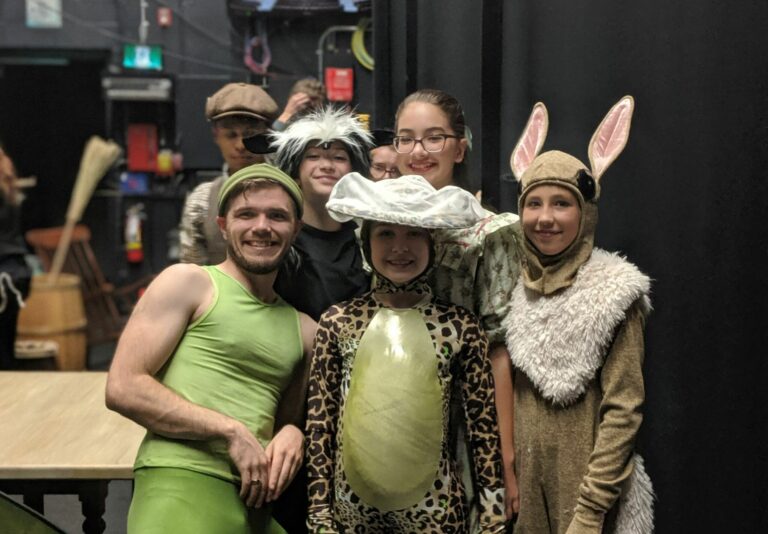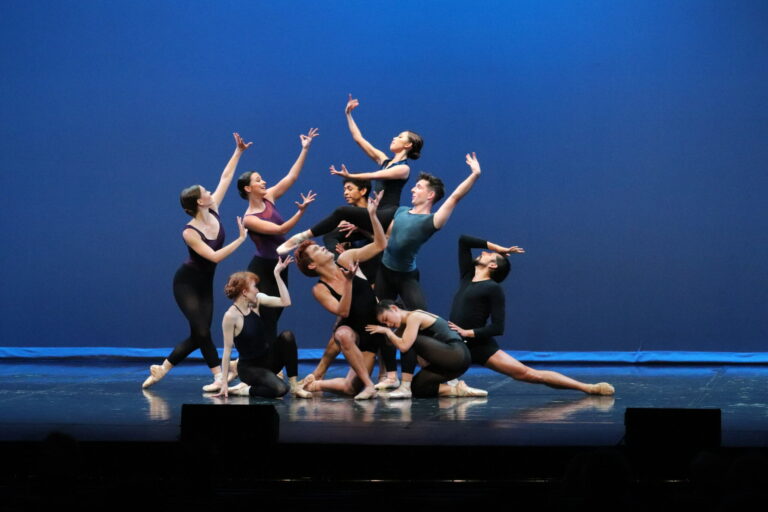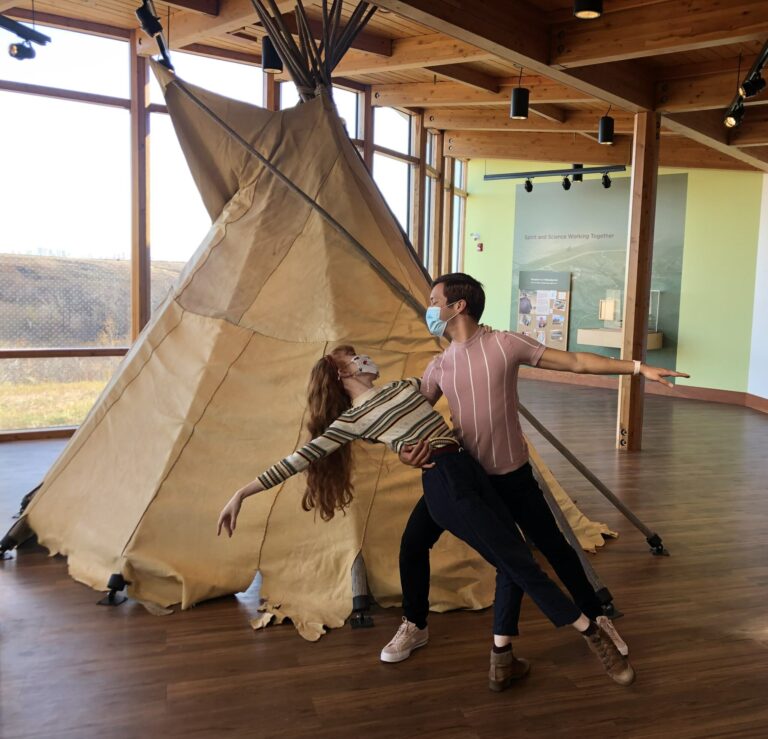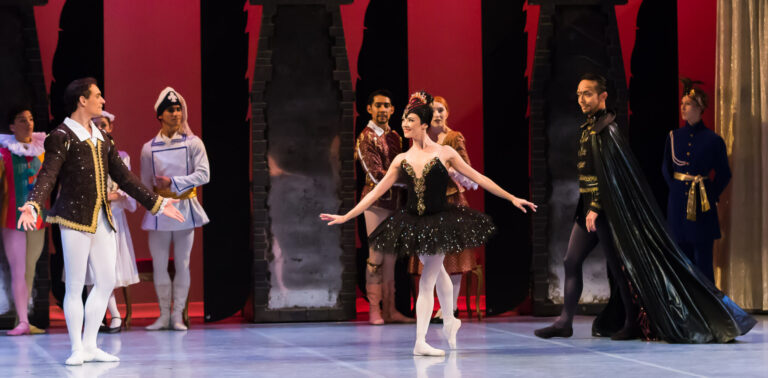
Bengt Jörgen is a co-founder of Canada’s Ballet Jörgen and serves as its Artistic Director and CEO. In 1992, his artistic vision led to the formation of a partnership with George Brown College in Toronto where he is the Artistic Director of the full-time dance program. Bengt Jörgen strongly believes in classical ballet as a powerful language and foundation to engage contemporary audiences with dance. He is committed to ensuring ballet is relevant to and has a place in the life of Canadians living in communities from coast to coast.
During our interview one thing shone through most prominently: Bengt Jörgen is passionate about ballet and its place in society. For him, ballet is a language which can be and should be accessible for all.
I came from Sweden and my education was essentially a very traditional European opera education. This was directly followed by working for a traditional European opera house.
Tradition was an element of everything we did.
And there is one problem of ballet: The way it is often presented, people perceive it as a cultural statement. A little froufrou. Elitist. It is associated with going to the opera, with royalty.
However, this doesn’t reflect the true reality of ballet. Ballet can be for everybody. The art form has always adapted itself to align with the way of the world.
In Russia, for example, during the revolution ballet became something for the people.
The same happened in China over time. Ballet was not just for the political party. It changed into something not just reserved to be enjoyed by the leadership.
When ballet made its way to the United States, it encountered a different country, a different world, and a different energy. The different place and mood were reflected in how the dancers moved.
Training in the US influenced me greatly. Then, I moved to Canada. I am straddling two worlds. The old and the new way of ballet.

I don’t see ballet as a cultural thing. In my company, we understand the history, but we also see ballet as what it truly is: It’s a language. And with this in mind, like every language, we have a choice in how to use it.
Sometimes it looks boring because you are stuck in convention. Other times, you don’t know why, but you’re soaring. How you use the human body and what you use it for is a choice.
Opera houses can be intimidating. Not welcoming for everyone. And some productions are not reflective of the interest of the people.
We can adapt the way we tell stories through ballet. We can do the classics in a new way. Find the essence of ballet, so you will think, “Wow this is amazing!” as you watch the story unfold onstage.
At Canada’s Ballet Jörgen, we re-adapt the great classics. We still present them as a great classical story. But we have another mood in them, make them more adaptive to our Canadian settings, so the audience can identify.
For example, our sleeping beauty is based on a native Saskatchewan tale. Sleeping beauty is really just a metaphor for how the rose got its thorns. We adapted the classic piece so it will interest the spectators because it will relate to their time and environment.
In general, at Canada’s Ballet Jörgen, we either adapt the old works or create new ones. And we are committed to give people access to professional, high-quality dance across Canada.
Our only rule: We will only show works that have been created by this company.

In most cities, people will have easy access to culture and dance. However, in the suburbs or further out, away from the urban areas, access is often a problem.
Thus, as a company, we specialize in reaching the underserved communities in Canada. We go to the smallest towns. East to west. To every part of the country.
Due to the size of the country, there is a massive problem when it comes to transportation. Depending on where you live, it’ll take you hours to get anywhere.
Yet, it is not just physical distances that can be a problem. Access can be difficult in terms of what you do or financially as well.
One day, in a grocery store, a quick encounter opened my eyes:
I was in this store in an average suburb of Toronto. In front of the milk shelf was this woman with two kids. And I could see she was in distress.
I asked, “Are you ok? Can I help you?”
And she said, “The milk. It’s gone up 10 cents per liter.”
I didn’t quite understand why she was so stressed about it.
And she explained, “I don’t know how I’ll meet the budget for my kids with the milk price going up this much.”
It hit me then: If you have to worry about that, then you’ll never come to see a performance. And if we don’t offer shows for families that are free of charge, seeing a show will be beyond their reach.
The question here is: Why should accessing art be this big investment in time, money, and organization?
As creators, we should aim to reach not just small, privileged groups, but a large portion of the overall population. Art is fundamental for fostering engagement in society.
People need to be able to come and experience art. They need to want to engage with it. Ballet is not something to come and admire. It is something that should touch you deeply and make you want to come back to see more of.

Important is also that people will be comfortable inside the venues they go to.
I read a study in the 90ies. It stated that 50% of people have never been to a theatre. And that 50% of the decision of somebody seeing an event has to do with the venue.
If you have to go to a place that seems strange and foreign to you, it’ll be another barrier.
Instead, we can offer performances in places that are familiar to people, like churches or community centers.
We can’t take things for granted and get buried in old conventions. Technique is there to set you free and create great things. To lift you up. Not to tie you down.
Why do we need people to understand the formality of dance, of art? Let’s rather speak to the real humanity beneath. We can speak about emotions. Humanity doesn’t change, even if technology does. The basic emotions will always be there. And thus, we have our common language.
At our company, we try to make the audience realize that we don’t take ourselves too seriously, either. We love ballet, but it’s not a religion.
Dance sometimes just gets eaten away by a bunch of formalities. Sometimes it is more for the creator than for the audience. What we need to understand is: It’s not about us. It’s about the audience.
The aesthetics have become a problem. Not just the old classics, but also modern body types, body type ideals.
Many ballet companies won’t hire you if you don’t have that specific shape. But what does your shape have to do with dancing beautifully?
Diversity is not just about hiring someone of a different skin color who looks the same in body type. Diversity is about hiring people who are different in all kinds of ways. To get them to work together and create something beautiful together.
We need people who are very fit. If they are physically too thin, we’ll break them. I often get people applying who look like wraiths. And I can’t hire them because they will get hurt.
At Canada’s Ballet Jörgen we are fighting stereotypes. We don’t care if you are short or tall.

We are not trying to break tradition. It doesn’t destroy ballet to say we don’t need everyone to be the same height to dance great.
We share the love for the history and technique of ballet. It gives us the vocabulary. But it can’t only be about that.
Our company is growing because people come to see us who are not necessarily people who would normally go to watch ballet.
Our ballet is fresh for the audiences. They are being challenged by seeing old works with fresh eyes. We are not for everybody. But we know that most people love what we do.
Touring through Canada, I see many poor people. We do free community programming for them in libraries in the suburbs. They are struggling. And I feel for them. I can identify even though I didn’t have it quite that bad.
My parents were so committed to give us access to the arts even though we were not wealthy. I was fortunate that I got into the Royal Swedish Ballet School at age 8. Had I not been accepted; I am not sure my parents would have had enough money for me to learn how to dance.
You see there is a theme here. How do we open ballet and dance up in all kinds of ways, to make it more accessible for everyone?
Billions are being spent on funding institutions in major centers. Yet there seems to be no money to get to people outside of urban centers.
We had arts funders say, it costs less to organize performances in big cities then let’s say in Newfoundland. Some said, it’s not appropriate for these outside communities to see ballet.
Why not? There is so much more money. How do we see our art form? And why should it be exclusive?
In ballet, there is so much non-verbal communication, we are halfway there. It’s relatively easy to reach people and make them understand.

My path wasn’t always as clear as it is today. But these are the values that have brought me forward.
Moving from Sweden to North America, I knew I’d be on my own. But I also knew I had to make that leap. I needed to understand more of what it means to dance. I had to make a difference.
As a North American dance community, we do a lot with little to no funding, compared to all the major companies in Europe. I don’t think the work I am doing here could have been done in Europe.
It is important to revitalize, broaden, make an effort. I know I am only a little speck in the grand scheme of things. But I hope at least here in Canada we are influencing people.
Many parents tell us they are so grateful. One time in Newfoundland, for example, we did a free community performance of Swan Lake. The parents were there with their kids, with tears in their eyes. They said, “Oh my God, you are here. And you are giving my child the opportunity to see this live. We’ve never had this before.”
A short while ago, we were way up North. It costs us a lot of money and we can only go there every 10 years or so. All our shows were sold out. All was privately funded from us and them. And people begged us to come back sooner next time.
We also do community outreach work. We try to support boys to dance in these small communities, for example. Because sometimes bullying does occur.
I want to say it again: It is not difficult to give people access to the arts. It is just not important for the institutions to go outside of the major centers.

It is never the communities saying, “We don’t want it.” It’s always the bureaucrats and institutions saying, “No, this is not for you.”
What a pity. Because we could make such a difference. You can reach young people early. It is proven that those people grow up to be more engaged in society. They vote more. Are more civic minded. Volunteer more.
Who will say, “No, we don’t want that?”
We did a show in a tough neighborhood in new Newfoundland. Afterwards, the students came to us. Many said, “I realize now that I have to work a lot harder in pursuing my interests.”
Our presence there wasn’t about us saying, “You’re gonna love dance.” No. Seeing our performance engaged them with their own lives.
I constantly say, help the arts to go out to more people. There is no downside.
It is all about the will to do so. To put on a show there is no more expensive place than downtown Toronto. It is extraordinarily expensive. Placing a show in a small community in comparison is negligible.
If we want ballet to live on, let’s make it broader and more interesting. Let’s bring it everywhere. Show the world what ballet and dance can do. Let’s be respectful of our artform, yet always aim to be contemporary and interesting at the same time.

Official Website Canada’s Ballet Jörgen
Twitter: @BalletJorgenCA
Facebook: @balletjorgencanada
Instagram: @canadasballetjorgen
Opera Village Africa – a Vision by Director Christoph Schlingensief
Opera for Everyone – Thousands enjoying Opera and Picnic Together


Liam Klenk was born in Central Europe and has since lived on four continents. Liam has always been engaged in creative pursuits, ranging from photography and graphic design, to writing short stories and poetry, to working in theatre and shows. In 2016, Liam published his first book and memoir, 'Paralian'.
Read Full Profile© 2021 TheatreArtLife. All rights reserved.

Thank you so much for reading, but you have now reached your free article limit for this month.
Our contributors are currently writing more articles for you to enjoy.
To keep reading, all you have to do is become a subscriber and then you can read unlimited articles anytime.
Your investment will help us continue to ignite connections across the globe in live entertainment and build this community for industry professionals.